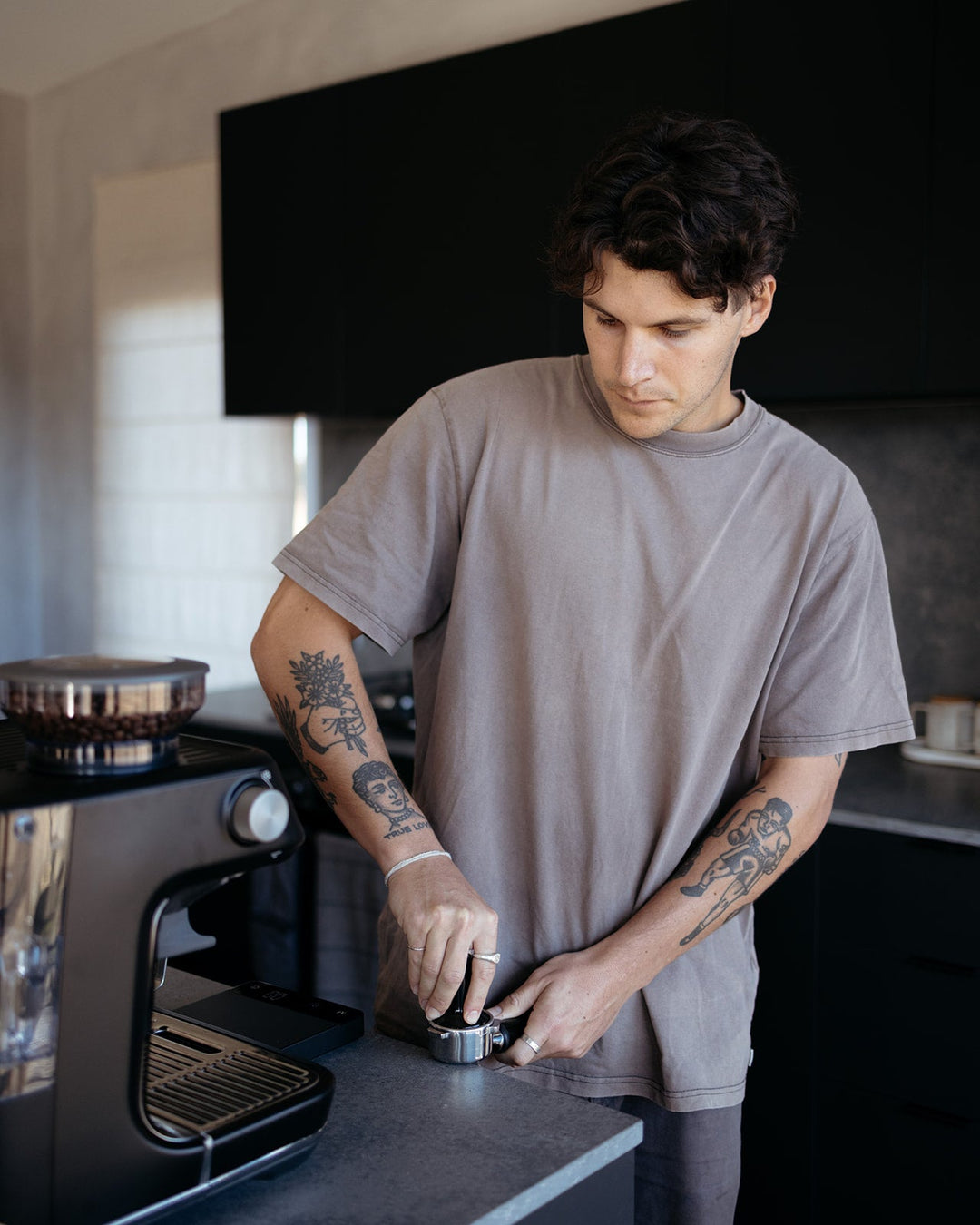Coffee Beans Uncovered: Finding the Tricks of Coffee and Blended Coffee Beans
When you think about coffee, what enters your mind? Is it the abundant fragrance of coffee or the complexity of a well-crafted mix? Recognizing the subtleties of coffee beans can change your experience. Each selection, from Arabica to Robusta, holds its very own tricks. As you explore additionally, you'll discover just how these beans form flavors and impact sustainability. What might you find concerning your following cup?
The Beginnings of Espresso: A Historical Viewpoint
Although espresso is now a staple in coffee society worldwide, its beginnings map back to the very early 20th century in Italy. You may be shocked to discover that the creation of coffee was driven by a wish for speed and performance. In 1901, Luigi Bezzera patented the initial espresso equipment, aiming to make coffee faster than conventional techniques. This innovation swiftly captured the interest of Italian coffee drinkers, bring about the espresso bars we recognize with today.
Understanding Coffee Beans: Features and ranges
When you consider coffee, it's important to recognize the different bean varieties and their special flavors. Each type brings a distinctive character to your mug, influenced by aspects like roast levels. Comprehending these elements can raise your coffee experience significantly.
Coffee Bean Varieties
As you check out the globe of espresso, you'll quickly uncover that not all beans are developed equal; each range brings its own unique tastes and characteristics to your cup. The most prominent kinds consist of Arabica and Robusta. Arabica beans are recognized for their smooth, nuanced tastes and reduced caffeine material, making them a favorite among coffee connoisseurs. On the other hand, Robusta beans pack a stronger punch with higher caffeine and a more bitter preference, commonly preferred in blends for their crema-enhancing high qualities. You could likewise come across specialized beans like Liberica and Excelsa, which provide distinctive accounts and are less common. Each range offers something various, so trying out will assist you locate your best coffee.
Flavor Profiles Explained
Understanding the flavor profiles of different espresso beans can elevate your coffee experience. Each bean selection offers unique features that affect aroma, mouthfeel, and taste. As an example, Arabica beans typically present a sweeter, a lot more complex flavor with tips of fruit and flower notes, while Robusta beans tend to be bolder, with natural and nutty undertones.
When you explore single-origin beans, you may discover distinctive regional tastes-- Central American beans might be citrusy and bright, whereas Italian blends frequently supply rich, chocolatey notes.
Roast Degrees Effect
Roast levels play an essential duty in shaping the taste and scent of espresso beans, affecting your overall coffee experience. With light roasts, you'll uncover intense acidity and a lot more obvious fruity notes. As you transfer to tool roasts, you'll delight in a balanced profile that showcases sweetness and complexity. Dark roasts, on the various other hand, often present rich, vibrant flavors with a great smoky coating, however they can mask the beans' intrinsic attributes. Comprehending these roast levels assists you select the coffee that fits your taste preferences. Trying out with various roasts can lead to fascinating discoveries, improving your appreciation for espresso. So, do not be reluctant to check out various roast levels and locate your best cup!
The Art of Blending: What Makes Blended Coffee One-of-a-kind
What makes blended coffee so fascinating? It's all about the art of integrating beans from different origins, roast levels, and flavor profiles. When you blend, you're not just mixing; you're producing a harmonious equilibrium that highlights the staminas of each bean. You can experiment with different combinations to boost level of acidity, sweetness, and body, causing a brew that's richer and much more intricate than a single-origin coffee.
Blending additionally permits you to satisfy diverse preference preferences. You can craft a mix that's smooth and smooth or one that's bold and durable, depending upon your audience. And also, blending can aid keep uniformity, providing a trusted taste experience no matter seasonal variations in beans. Whether you're a home or a barista maker, grasping the art of blending opens up a globe of creativity and taste possibilities, making your coffee experience absolutely special.
Taste Profiles: Sampling Notes of Coffee vs. Blended Coffee
Combined coffee supplies a globe of taste opportunities, but when it concerns coffee, you're taking a look at a much more focused experience. Espresso commonly showcases bold, abundant tastes with a thicker mouthfeel. You could notice notes of dark delicious chocolate, sugar, and even tips of fruit, depending on the beans. The intensity can be both revitalizing and pleasing.
On the other hand, mixed coffee offers a complicated tapestry of flavors. You can explore a selection of sampling notes, from wonderful and nutty to flower and fruity. Each blend can provide something one-of-a-kind, frequently combining beans from various areas to develop a well balanced account.
While coffee delivers a strike, blended coffee invites you to appreciate the nuances. Whether you choose the robust toughness of coffee or the complex flavors of combined coffee, each cup informs its own tale, awaiting you to uncover.
Developing Techniques: Refining Your Coffee Shot
To achieve the ideal espresso shot, recognizing i thought about this the developing strategies is essential, as even small changes can substantially influence the taste and high quality. Start by utilizing fresh, high-grade coffee beans; grind them just prior to developing for optimum taste. Aim for a fine work, regarding the consistency of common salt, to ensure excellent removal.
Next, focus on your water temperature level; it must be in between 195 ° F to 205 ° F. Too hot or also cold can wreck your shot. Use regarding 18-20 grams of coffee for a dual shot, and tamp it equally with strong pressure to create a consistent puck.
A longer removal can lead to anger, while also short can result in sour tastes. Exercise these techniques regularly, and you'll fine-tune your abilities, achieving that abundant, robust espresso shot you hunger for.
The Duty of Roast Levels in Espresso and Blended Coffee
After understanding the developing methods for coffee, it's time to ponder how roast levels affect the flavor account of your coffee. The roast degree can dramatically modify your coffee's scent, body, and preference. Light roasts tend to highlight the coffee's beginning, using brilliant acidity and fruity notes, while tool roasts equilibrium level of acidity content and sweetness, developing a well-shaped flavor. Dark roasts, on the various other hand, draw out bold, rich tastes with lower level of acidity, often generating chocolate or great smoky touches.

Checking Out Sustainability: Honest Sourcing of Coffee Beans
When you select coffee, you're not just picking a flavor; you're deciding concerning the influence on farmers and the setting. Understanding Fair Trade practices, organic farming methods, and accreditation requirements can aid you sustain lasting coffee sourcing. Let's discover just how these factors contribute to a more moral coffee experience.
Fair Profession Practices
Fair Trade techniques play a crucial role in ensuring that coffee beans are sourced fairly and sustainably. When you pick Fair Trade coffee, you support farmers who get fair earnings and job in secure conditions. By choosing for Fair Trade brand names, you're not simply enjoying a rich cup of coffee; you're making a positive impact on the lives of those who grow it.
Chemical-free Farming Approaches
As you explore the globe of ethical coffee sourcing, natural farming methods arise as an essential part of sustainability. Furthermore, it typically leads to stronger, much healthier coffee plants, resulting in richer tastes in your cup. When you decide for natural coffee, you're making a mindful option that benefits both the earth and your taste buds.
Certification Requirements Explained
Understanding accreditation criteria is vital for anyone thinking about morally sourced coffee. These standards, such as Fair Profession, Rain Forest Alliance, and USDA Organic, assurance that coffee is expanded under sustainable methods. You support farmers that adhere to honest labor techniques and environmental security. when you choose licensed coffee.
Fair Profession certification focuses on supplying reasonable wages and working problems, while Rain forest Alliance highlights biodiversity and ecosystem preservation. Next time you're at your neighborhood café or grocery store, look for these tags, and feel great recognizing your coffee purchase favorably influences areas and the environment.
Regularly Asked Inquiries


How Does Elevation Influence the Growth of Coffee Beans?
Altitude influences coffee bean growth by affecting temperature level and climate. Greater altitudes often generate denser beans with more complex tastes, while lower elevations can lead to faster development yet less delicious outcomes. You'll taste the distinction!
What's the Difference In Between Arabica and Robusta Beans?
Arabica beans are sweeter and a lot more complicated, while Robusta beans have a stronger, harsher flavor with greater high levels of caffeine content. You'll locate Arabica favored for specialized coffees, whereas Robusta's usually made use of in instantaneous coffee and espresso blends.
Can Coffee Beans Go Bad or Shed Taste With Time?
Yes, coffee beans can go bad and shed flavor in time. They'll become stale if you save them poorly or maintain them as well long. Always maintain your beans in a closed container far from light and wetness.
What Are the Wellness Perks of Alcohol Consumption Espresso?
Consuming coffee increases your power, enhances psychological clarity, and might decrease the risk of specific conditions. It's abundant in antioxidants, supports metabolic rate, and can improve mood, making it an advantageous option for your day-to-day routine.
Exactly How Does Water Quality Effect Espresso Removal?
Water high quality considerably affects espresso extraction. It influences the solubility of tastes and oils, influencing taste and aroma. Making use of filtered water can boost your espresso, ensuring a well balanced and delightful cup every time you brew.
Coffee Beans Uncovered: Finding the Tricks of Espresso and Blended Coffee Beans.
Recognizing the taste profiles of different coffee beans can elevate your coffee experience.Roast check over here degrees play an important duty in shaping the taste and aroma of espresso beans, affecting your overall coffee experience (SOE).Blended coffee uses a globe of taste possibilities, but when it comes to espresso, you're looking at a much more focused experience.After mastering the developing strategies for coffee, it's time to ponder exactly how roast levels influence the taste profile of your coffee